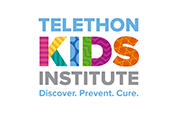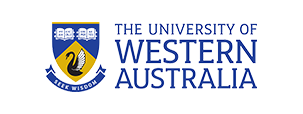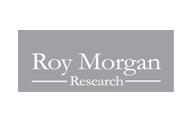Young Minds Matter Survey results
Survey estimates
Diagnostic Interview Schedule for Children Version IV (DISC-IV)
The Diagnostic Interview Schedule for Children Version IV (DISC-IV) was the diagnostic tool used in the survey. It comprises a series of mental disorder modules that implements the criteria for mental disorders set out in the Diagnostic and Statistical Manual of Mental disorders, 4th edition (DSM-IV).
The DISC-IV was used with the permission of Columbia University.
Modules for seven disorders were used in the survey — social phobia, separation anxiety disorder, generalised anxiety disorder, obsessive-compulsive disorder, major depressive disorder, attention-deficit/hyperactivity disorder (ADHD) and conduct disorder.
Weighting and rounding
All estimates have been derived from the survey sample, and weighted to represent the population of children and families in Australia. The estimates have been rounded, generally to three significant digits. As such, discrepancies may occur between the sums of component items and their totals.
Confidentiality and suppression of cells
Estimates have been suppressed where there were less than 5 survey respondents contributing to a cell. These appear as blank cells in tables and are omitted from charts.
Accuracy of estimates
Estimates are shown along with 95% confidence limits. Because Young Minds Matter was based on a sample and not a full census of Australian children and adolescents, the survey estimates could differ from the results that would be obtained from a full census due to random chance. The 95% confidence limits give an indication of the degree of sampling variability associated with the estimates. As a general rule, estimates that are based on larger numbers of contributing children are more accurate than those where fewer sample children contribute to the estimate. For instance, using the remoteness classification, the prevalence estimates for Major Cities are more accurate than those for Remote Australia because a higher proportion of the sample was located in Major Cities.
As an approximate rule of thumb, when comparing two prevalence estimates, if the ranges for the confidence limits of both estimates overlap, there is a higher chance that any difference between the two figures could be attributed to chance variation. When the ranges of the confidence limits do not overlap there is a greater chance that a full census would also have found a difference in the figures being compared.
12 month prevalence
Meeting diagnostic criteria according to the DSM-IV (for the purposes of this report) in the 12 months prior to interview. Prevalence includes both new cases, whose symptoms first developed during the 12 months prior to the interview and continuing cases whose symptoms were present prior to the 12 months, but persisted, and were at a level to meet the diagnostic criteria in the 12 months prior to interview.
Mental disorders assessed via parent or carer report
Anxiety disorders
A class of mental disorders defined by the experience of intense and debilitating anxiety.
The types of anxiety disorders covered in the survey were social phobia, separation anxiety disorder (SAD), generalized anxiety disorder (GAD), and obsessive-compulsive disorder (OCD).
Modules for each of these four anxiety disorders from the DISC-IV were completed by parents and carers and their responses used to determine if the young person met the diagnostic criteria for an anxiety disorder in the 12 months prior to interview.
Separation anxiety disorder
An anxiety disorder characterised by excessive anxiety concerning separation from the home or from those to whom the child is attached.
To meet DSM-IV criteria, the anxiety must be beyond that which is expected for the child or adolescent’s developmental level, and cause significant distress in social, academic or other important areas of functioning for at least four weeks.
The module for Separation anxiety disorder from the DISC-IV was completed by parents and carers and their responses used to determine if the young person met the DSM-IV criteria for Separation anxiety disorder in the 12 months prior to interview.
Social phobia
An anxiety disorder characterised by a strong fear of social interaction or performance situations. People with social phobia avoid social situations in case of embarrassment or humiliation.
To meet DSM-IV criteria symptoms must be present for at least six months and the fear or avoidance of social situations must interfere significantly with the child or adolescent’s normal routine, academic functioning, or social activities or relationships, or they must experience marked distress about the phobia.
The module for Social phobia from the DISC-IV was completed by parents and carers and their responses used to determine if the young person met the DSM-IV criteria for Social phobia in the 12 months prior to interview.
Generalised anxiety disorder
An anxiety disorder characterised by excessive anxiety, worry or apprehension about a number of different events or activities.
To meet DSM-IV criteria, symptoms must occur more days than not for a period of at least six months. The constant worry causes distress to the individual. The child or adolescent has difficulty controlling the worry, and experiences impairment in social, academic or other important areas of functioning.
The module for Generalised anxiety disorder from the DISC-IV was completed by parents and carers and their responses used to determine if the young person met the DSM-IV criteria for Generalised anxiety disorder in the 12 months prior to interview.
Obsessive-compulsive disorder
An anxiety disorder characterised by recurrent obsessions or compulsions.
Obsessions are persistent ideas, thoughts, impulses or images that are intrusive and difficult to control and that cause anxiety or distress. Common obsessions include worrying about things being dirty or having germs, or that the person might do something bad in public.
Compulsions are repetitive behaviours, such as washing hands or changing clothes over and over, repetitively checking things, or counting or ordering things over and over.
To meet DSM-IV criteria, the compulsions and obsessions must be severe enough to be time consuming and cause marked distress or significant impairment.
The module for obsessive-compulsive disorder from the DISC-IV was completed by parents and carers and their responses used to determine if the young person met the DSM-IV criteria for obsessive-compulsive disorder in the 12 months prior to interview.
Major depressive disorder
The key feature of major depressive disorder is the presence of either depressed mood, loss of interest or pleasure or being grouchy, irritable and in a bad mood. Symptoms may include significant weight loss or weight gain, loss of appetite, insomnia or hypersomnia, restlessness, fatigue and loss of energy, feelings of worthlessness and inability to concentrate.
The DSM-IV criteria specify that at least five symptoms of depression must be present for a minimum of a two-week period, that these symptoms cause clinically significant distress to the child or adolescent and that they must interfere with the child or adolescent’s normal functioning at school, at home or in social settings.
The module for Major depressive disorder from the DISC-IV was completed by parents and carers and their responses used to determine if the young person met the DSM-IV criteria for Major depressive disorder in the 12 months prior to interview.
Young people aged 11 years and older also completed this module and prevalence data based on their responses are reported as ‘Major depressive disorder based on adolescent report’.
Attention-deficit/hyperactivity disorder (ADHD)
Persistent pattern of inattention and/ or hyperactivity-impulsivity. Children and adolescents may find it difficult to pay attention and see tasks or activities through to the end or make careless mistakes with school work or other tasks. Children and adolescents with problems in the area of hyperactivity may talk excessively, have trouble staying still when it is appropriate or expected and act like they are ‘always on the go’.
There are three subtypes of ADHD based on the most common symptoms. Those with mostly inattentive symptoms are diagnosed with ADHD, predominantly inattentive type and individuals with primarily hyperactivity-impulsivity symptoms are diagnosed with ADHD, predominantly hyperactive-impulsive type. Those children and adolescents with symptoms of both inattentiveness and hyperactivity are diagnosed with ADHD, combined type.
To meet DSM-IV criteria symptoms must be more frequent and severe than in other individuals at a similar developmental stage, persist for at least six months and some impairment from the symptoms must be present in two or more settings (e.g. at school and at home).
The module for ADHD from the DISC-IV was completed by parents and carers and their responses used to determine if the young person met the DSM-IV criteria for ADHD in the 12 months prior to interview.
Conduct disorder
Repetitive and persistent behaviour to a degree that violates the basic rights of others, major societal norms or rules in terms of aggression towards people or animals, destruction of property, deceitfulness or theft, and serious violation of rules. Young people with conduct disorder exhibit a range of behaviours often including bullying, frequent physical fights, deliberately destroying other’s property, breaking into properties or cars, staying out late at night without permission, running away from home or frequent truancy from school.
The DSM-IV criteria specify that at least three or more of these behaviours must have been present in the past 12 months, with at least one in the past 6 months. These behaviours must also cause clinically significant impairment in social, academic or occupational functioning.
The module for Conduct disorders from the DISC-IV was completed by parents and carers and their responses used to determine if the young person met the DSM-IV criteria for Conduct disorder in the 12 months prior to interview.
Classification variables
Family type
Families were classified into families with two parents or carers and families with one parent or carer. Families with two parents or carers were further categorised into original, step, blended or other families corresponding to the Australian Bureau of Statistics family blending classification variable introduced in the 2006 Census. These are defined as follows:
- Original families contain at least one child who is the natural, adopted or foster child of both partners in the couple and no step children. The Australian Bureau of Statistics refers to this category as ‘intact families’.
- Step families have at least one resident step child, but no child who is the natural or adopted child of both partners.
- Blended families have two or more children; at least one child who is the natural or adopted child of both parents, and at least one who is the step child of one of them.
- Other families have no children who are the natural, adopted, foster or step child of either parent or carer. These include families with children being raised by their grandparents or other relatives.
Household income
Household income has been split into three approximately equally sized groups. Around 4% of families either didn’t know or refused to provide their household income. These families have been excluded from tables and charts relating to household income.
Labour force status
This classifies people as employed when working full-time, part-time or away from work, or not in employment when unemployed or not in the labour force. Employed includes casual, temporary or part-time work if it was for an hour or more.
For the purposes of the survey this was collected for both parents and carers for the previous week.
Index of relative socio-economic disadvantage
The index of relative socio-economic disadvantage is produced by the Australian Bureau of Statistics from the 2011 Census of Population and Housing, and gives a summary measure of the relative socio-economic disadvantage of the Statistical Area 1 (SA1) that the household is located in.
Area of residence
Area of residence was categorised as either Greater Capital Cities or Rest of state based on the Australian Bureau of Statistics Greater Capital City Statistical Area (GCCSA) classification. This classification represents the functional extent of the eight state and territory capital cities in Australia. Households within these areas were classified as Greater Capital Cities. The remainder were classified as Rest of state.
Remoteness area
Remoteness areas are based on the Australian Bureau of Statistics Remoteness Area classification for the Statistical Area 1 (SA1) the household is located in.
The top 1% most remote SA1s in Australia were excluded from the sampling frame, and the survey has poor coverage of very remote areas. For output purposes the categories 'Remote Australia' and 'Very Remote Australia' have been combined.
The ABS Remoteness Area classification is based on the Accessibility/Remoteness Index of Australia (ARIA+) produced by the National Centre for Social Application of Geographic Information Systems (GISCA) at the University of Adelaide.
Remoteness area boundaries can be downloaded from the Australian Bureau of Statistics web site www.abs.gov.au
Family functioning
A shortened version of the General Functioning Subscale of the McMaster Family Assessment Device was used to classify families into four levels of functioning. This ranged from very good through to poor, with poor indicating unhealthy family functioning likely to require clinical intervention. Of all families in the survey 3.7% had a poor level of family functioning.
Boterhoven de Haan KL, Hafekost J, Lawrence D, Sawyer MG, Zubrick SR (2014). Reliability and validity of a short version of the general functioning subscale of the McMaster Family Assessment Device. Family Process. doi: 10.1111/famp.12113




